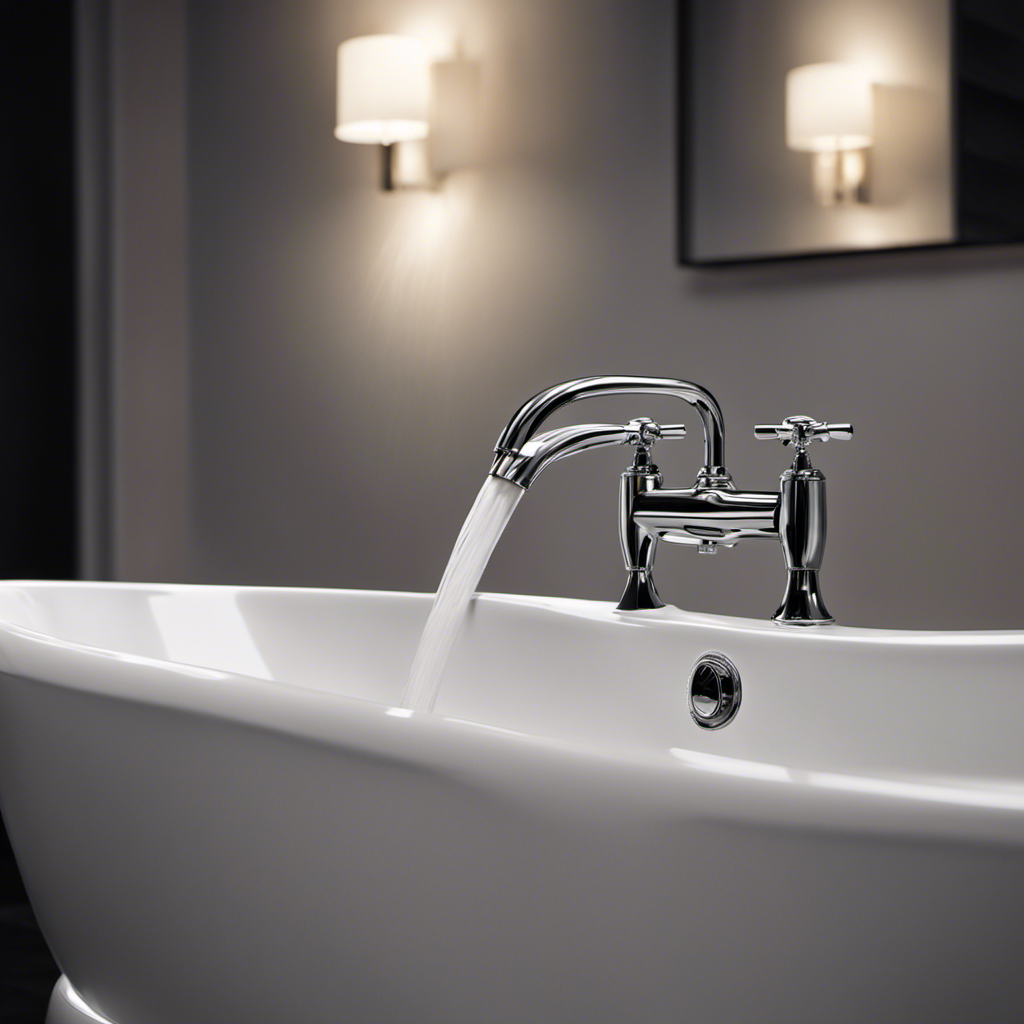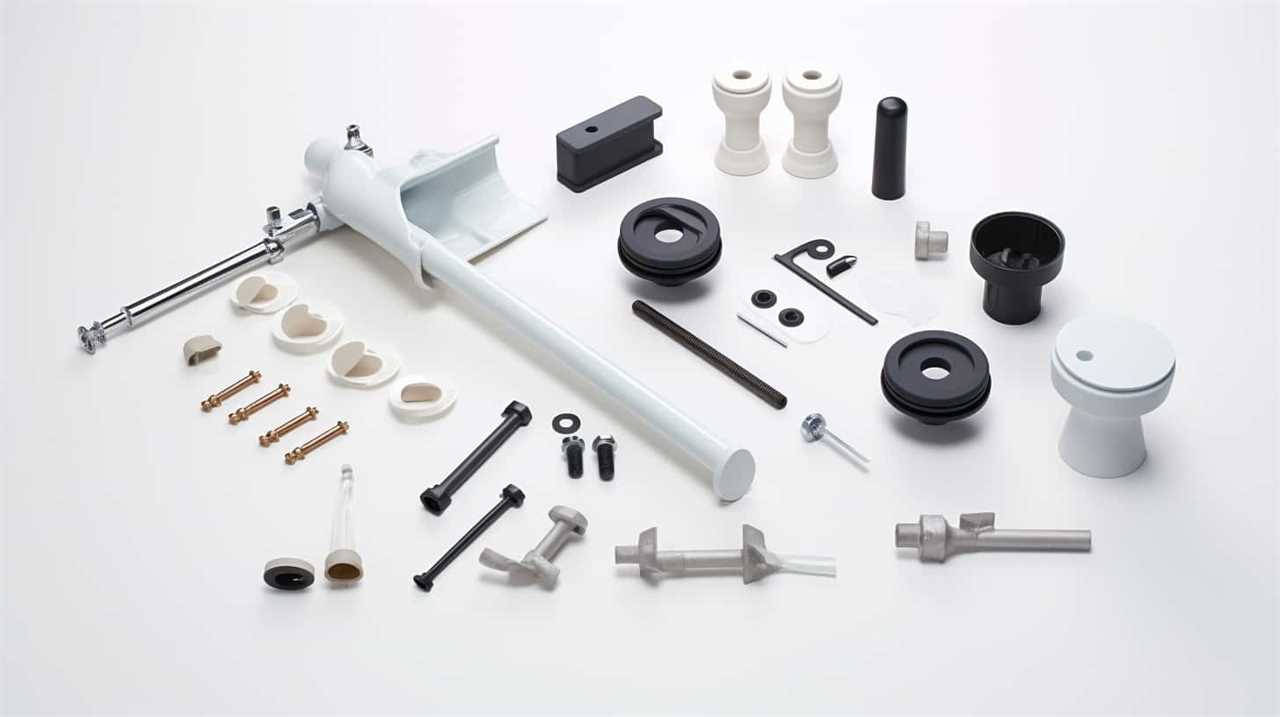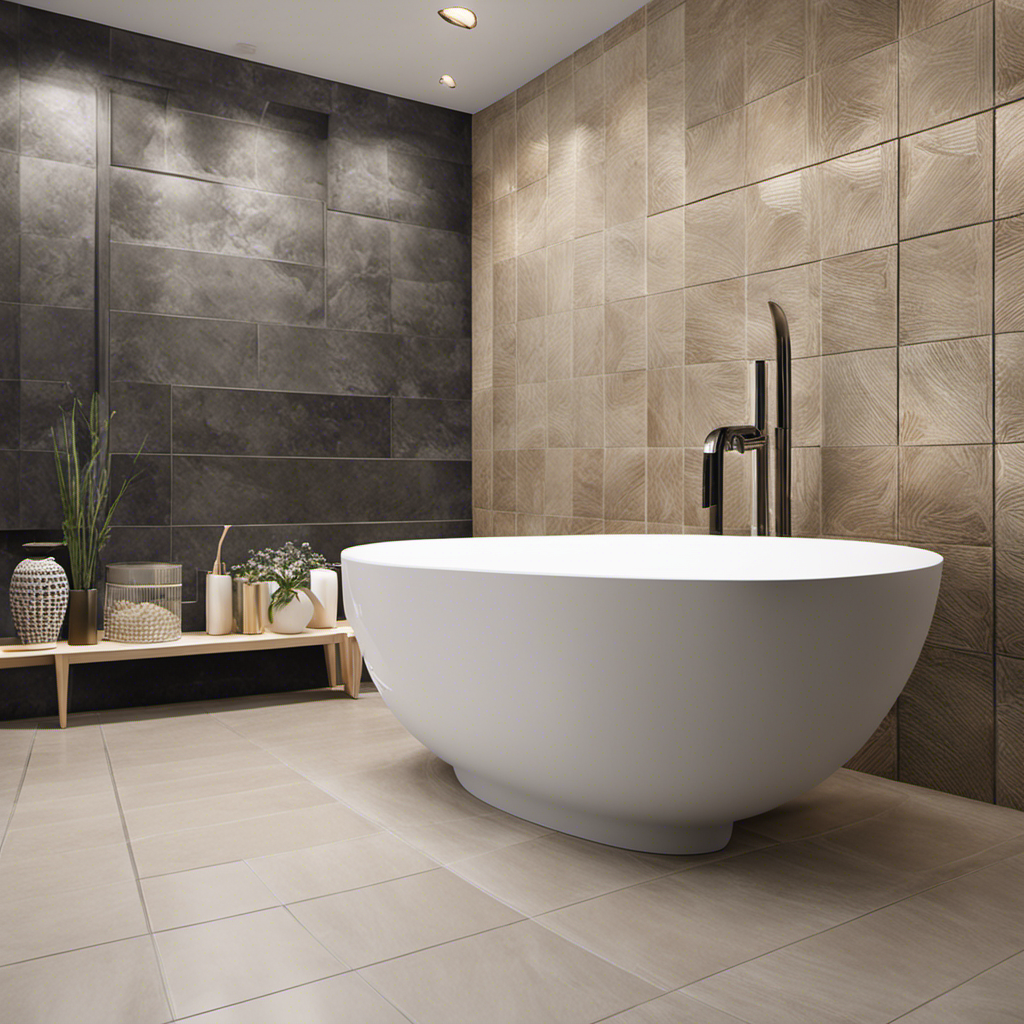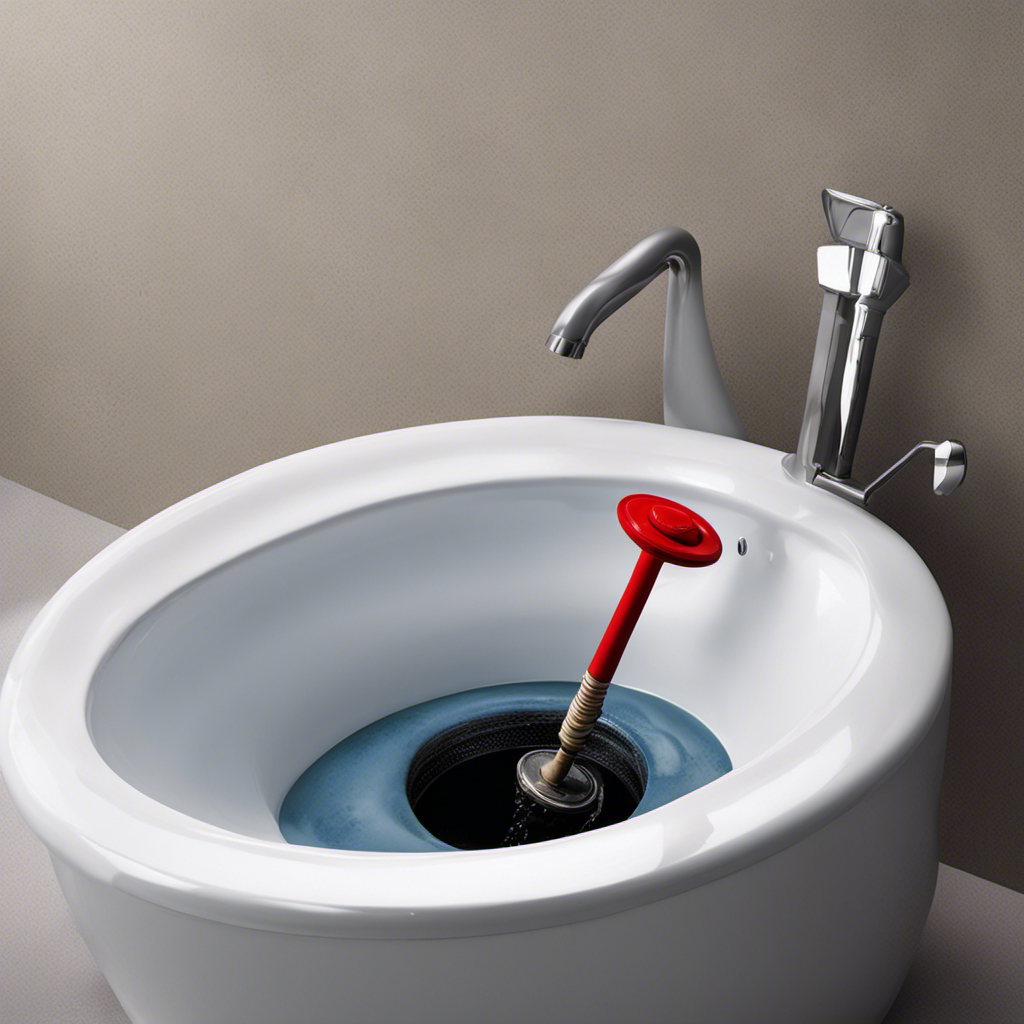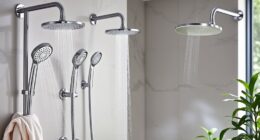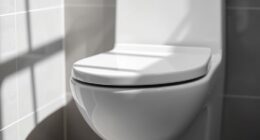I’ve always been annoyed by the constant drip-drip-drip sound coming from my bathtub faucet. It’s like a leaky faucet is a never-ending reminder of wasted water and money.
But why does it happen? In this article, I’ll explore the common causes of bathtub faucet drips and provide simple solutions to fix them.
From leaking gaskets and corroded valve seats to faulty cartridges and worn-out washers, I’ll shed light on the hidden problems behind this frustrating issue.
Let’s dive in and put an end to that annoying drip!
Key Takeaways
- Causes of bathtub faucet drips include worn-out rubber washers, leaking gaskets and O-rings, corroded valve seats, and faulty cartridges or discs.
- Repairing drips caused by worn-out washers involves turning off the water supply, disassembling the faucet handle, removing the old washer, replacing it with a new one, and reassembling the faucet.
- Drips caused by leaking gaskets and O-rings can be addressed by disassembling the faucet, locating the worn gaskets or O-rings, replacing them with new ones, regularly cleaning and lubricating gaskets, and practicing proper maintenance to prevent leaks.
- Drips caused by corroded valve seats can be identified through signs such as slow or constant dripping, difficulty turning off the faucet, uneven water flow, and rusty or discolored water. Regular maintenance and cleaning can help prevent corrosion.
Common Causes of Bathtub Faucet Drips
One common cause of a bathtub faucet dripping is worn-out rubber washers that need to be replaced. When the rubber washers become old or damaged, they can no longer create a watertight seal, causing water to leak out of the faucet.
Repairing faucet drips caused by worn-out washers is a relatively straightforward process. First, turn off the water supply to the faucet. Next, disassemble the faucet handle and remove the old rubber washer. Replace it with a new one of the same size and reassemble the faucet.
Turn the water supply back on and test the faucet to ensure the leak has been fixed. Troubleshooting faucet leaks is essential to prevent water waste and potential damage to your bathtub or bathroom.
Leaking Gaskets and O-Rings: A Major Culprit
When it comes to faucet leaks, worn gaskets and faulty O-rings are often the culprits.
Over time, the gaskets can become worn or damaged, causing water to seep through and create leaks.
Similarly, O-rings can deteriorate or become misaligned, leading to the need for replacement.
These common issues are often the cause behind the frustrating and persistent drip in your faucet.
Worn Gaskets Cause Leaks
The most common reason for a dripping bathtub faucet is worn gaskets, which can cause leaks. Gaskets are small rubber rings that create a seal between different parts of the faucet, preventing water from escaping. Over time, these gaskets can wear out due to constant use and exposure to water, leading to leaks.
To repair a dripping faucet caused by worn gaskets, you will need to replace them. This can be done by disassembling the faucet and locating the gaskets. Once you have the new gaskets, simply remove the old ones and replace them with the new ones.
Regular maintenance and preventive measures, such as cleaning and lubricating the gaskets, can help prevent faucet leaks and prolong the life of the gaskets.
Faulty O-Rings Need Replacing
To fix the issue of a faulty O-ring, you’ll need to replace it with a new one. O-rings are small rubber rings that create a watertight seal between the different components of your faucet. When they become worn or damaged, they can cause leaks.
Faucet leaks can be caused by various factors, including worn-out washers, corroded valves, or loose connections. However, a common cause is a faulty O-ring. To prevent faucet dripping, it’s important to regularly inspect your O-rings and replace them as needed.
Additionally, taking care not to overtighten the faucet handles can help prevent unnecessary strain on the O-rings. By addressing faulty O-rings promptly and practicing proper maintenance, you can prevent faucet leaks and keep your plumbing in good condition.
Common Faucet Drip Causes
One of the most common causes of a faucet leak is a worn-out washer. When the washer becomes worn or damaged, it can no longer create a tight seal, allowing water to leak from the faucet.
Other causes of faucet leaks include worn-out O-rings, loose connections, and faulty cartridges.
Troubleshooting faucet drips can be done by first turning off the water supply to the faucet and then disassembling the handle to access the internal components. Inspecting the washer, O-rings, and cartridge for any signs of wear or damage is crucial. If any of these components are worn out, they should be replaced to fix the drip.
Regular maintenance and prompt repairs are essential in preventing faucet leaks and conserving water.
Corroded Valve Seats: A Hidden Problem
You might be surprised to learn that corroded valve seats could be causing your bathtub faucet to drip. When the valve seats become corroded, it prevents a tight seal between the faucet and the valve. This allows water to leak through, resulting in that annoying drip.
But how can you tell if your valve seats are corroded? Here are four signs to look out for:
-
Slow or constant dripping: If you notice water consistently dripping from your faucet, it could be a sign of corroded valve seats.
-
Difficulty turning off the faucet: If you find it hard to fully shut off your faucet, it may indicate corrosion in the valve seats.
-
Uneven water flow: Corroded valve seats can cause the water flow to become irregular or fluctuating.
-
Rusty or discolored water: If your water appears rusty or discolored when you turn on the faucet, it could be due to corroded valve seats.
To prevent corrosion and extend the lifespan of your valve seats, regular maintenance and cleaning is essential.
Faulty Cartridges or Discs: The Source of Drips
When it comes to dealing with faucet drips, it’s important to understand the common cartridge problems and leaking disc mechanisms that could be causing the issue.
These components are crucial in controlling the flow of water and ensuring a tight seal, but they can become worn out or damaged over time.
Luckily, repairing faucet drips caused by faulty cartridges or disc mechanisms is a relatively straightforward process that can save you time and money in the long run.
Common Cartridge Problems
There’s a good chance that the common cartridge in your bathtub faucet is causing the drip. Cartridges are a vital component in controlling the flow of water, and over time, they can develop issues that lead to leaks.
To help you understand the common problems associated with bathtub faucet cartridges, here are four key points:
-
Worn-out O-rings: O-rings create a watertight seal, but they can wear down over time, causing leaks. Regularly inspect and replace them to prevent dripping.
-
Mineral build-up: Sediment and minerals can accumulate on the cartridge, affecting its performance. Regular cleaning and descaling can help maintain the cartridge’s functionality.
-
Loose or damaged parts: Loose or damaged screws, handles, or nuts can cause leaks. Tighten or replace any faulty components to resolve the issue.
-
Incorrect installation: Improper installation of the cartridge can lead to leaks. Ensure that the cartridge is correctly aligned and secured for optimal performance.
Leaking Disc Mechanisms
Now that we have discussed common cartridge problems, let’s move on to another possible cause of a dripping bathtub faucet: leaking disc mechanisms.
This issue occurs when the rubber or silicone discs inside the faucet become worn out or damaged, causing water to leak from the spout even when the faucet is closed.
Leaking disc mechanisms can be a significant source of water waste, leading to higher water bills and unnecessary strain on our environment. It is crucial to address this issue promptly to conserve water and save money.
To fix a leaking disc mechanism, you will need to disassemble the faucet and replace the worn-out discs. It is recommended to consult a professional plumber for this task, as they have the necessary expertise and tools to complete the repair accurately.
Repairing Faucet Drips
To repair a dripping faucet, you should start by turning off the water supply to the affected area.
Here are four steps to help you tackle the task of repairing faucet drips:
-
Remove the faucet handle: Use a screwdriver or an Allen wrench to unscrew the handle from the stem. This will expose the cartridge or valve inside.
-
Inspect the cartridge or valve: Check for any signs of damage or wear. If there are any cracks or leaks, it’s likely that the cartridge or valve needs to be replaced.
-
Replace the cartridge or valve: Purchase a replacement cartridge or valve that matches the make and model of your faucet. Follow the manufacturer’s instructions to install the new component.
-
Test for leaks: After reinstalling the faucet handle, turn the water supply back on and check for any leaks. If the dripping has stopped, congratulations! If not, you may need to seek professional assistance to troubleshoot and repair the faucet.
Loose or Worn Out Washers: A Simple Fix
You can easily fix a dripping bathtub faucet by replacing the loose or worn out washers. A dripping faucet can be a nuisance, wasting water and causing annoying noises. The most common cause of faucet leaks is worn out washers. Over time, the constant use and exposure to water can cause the washers to deteriorate, resulting in leaks. Fortunately, fixing a dripping faucet is a simple DIY task that can save you money on water bills and prevent further damage to your plumbing system. By replacing the washers, you can restore the tight seal and eliminate the dripping. Here is a helpful table outlining the steps to fix a dripping faucet:
| Steps to Fix a Dripping Faucet |
|---|
| Turn off the water supply |
| Remove the handle |
| Replace the washers |
| Reassemble the faucet |
The Role of Water Pressure in Faucet Dripping
If water pressure is too high, it can contribute to a dripping faucet. High water pressure puts extra strain on the internal components of the faucet, causing them to wear out faster and leading to leaks.
To troubleshoot high water pressure and prevent dripping faucets, try these tips:
-
Install a pressure regulator: This device helps control the water pressure coming into your home and prevents it from reaching excessive levels.
-
Check the pressure relief valve: If your home has a pressure relief valve, make sure it is functioning properly. This valve releases excess pressure and protects your plumbing system.
-
Adjust the pressure reducing valve: If you have a pressure reducing valve, adjust it to a lower setting to decrease the water pressure in your home.
-
Consult a professional: If you are unable to resolve the high water pressure issue on your own, it’s best to seek the help of a licensed plumber who can assess and address the problem.
Conclusion
As I pondered the persistent drip of my bathtub faucet, I delved into the world of plumbing mysteries.
I discovered that leaking gaskets and corroded valve seats were common culprits, but it was the faulty cartridges and loose washers that intrigued me.
However, there was one element that seemed to hold the key to the mystery: water pressure. Could it be that the force behind the drip was more complicated than I had imagined?
With bated breath, I embarked on a quest for answers, eager to uncover the hidden secrets of my dripping faucet.
